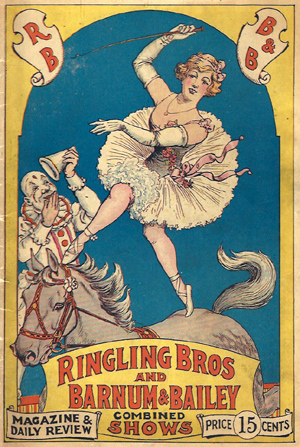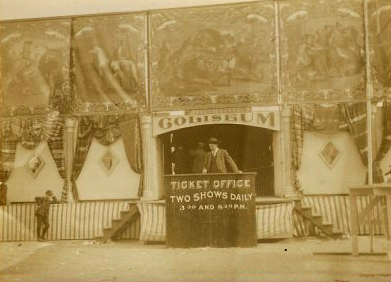The recent news that Ringling Bros. and Barnum & Bailey Circus will shut down “The Greatest Show on Earth” in May 2017 brings to mind Bowling Green’s long history of circuses, some of which is documented in the Manuscripts & Folklife Archives collections of WKU’s Department of Library Special Collections.
Research into the city license records by a former librarian reveals that by 1875, some 36 circuses had come through Bowling Green, often several times a year. The P. T. Barnum circus paid for its first license in 1853, with an additional fee for “one side show.” The very first circus, however, appears to have been in 1839, when the “Raymond & Waxing” troupe came to town. A witness to the extravaganza was Henry Fox, who marveled at the many kinds of animals, including camels and lions. But “the elephant was the great show,” he remembered, the biggest creature he had ever seen: “He had tusks that come out and crossed and he could throw his snout up and drop it down.”
In an age when entertainment on such a scale was rare, the arrival of the circus in Bowling Green caused tremendous excitement. One April day in 1879, 15-year-old Josephine Calvert went to school as usual, where her older sister Lida happened to be the teacher. Lida, however, had to give up and dismiss the class when only three students showed up. The reason? “There is a circus in town,” Josie wrote in her diary, “and all are perfectly crazy.”
True to their reputations, circus folk and their animals could generate some strange legends. Born in 1852, Elizabeth Gaines recalled her mother’s description of a cholera epidemic in Bowling Green “said to have been caused from the death of a very large snake,” that had expired while the circus was in town. “They buried the snake,” Elizabeth was told, but some of the people connected with the circus also fell victim to the disease.
Click on the links to access finding aids for these collections. For more, search TopSCHOLAR and KenCat.


